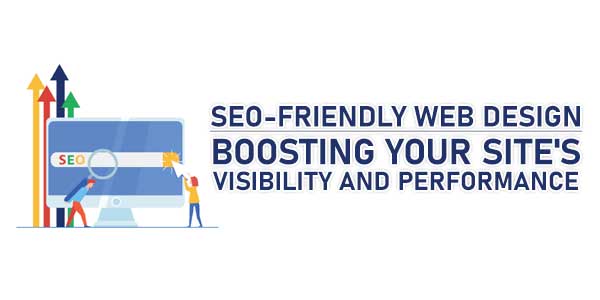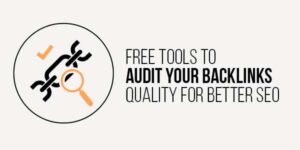
Online visibility is a battleground in today’s digital world, where competition is high. More than having a website that looks professional is needed to ensure your website’s success.
Search Engine Optimization should be included into the planning and creation of a website in every step to increase website’s discoverability and draw in the target audiece.
When creating a website, considering search engine optimization from th outset may have financial and productivity benefits. Incorporating SEO best practices from the start saves time and money compared to adapting an existing site that wasn’t developed with SEO in mind.
In this article, let us understand the importance of search engine optimization (SEO)-friendly website construction and how it helps your website stand out online.
Table of Contents
What Is SEO Web Design?
The main goal of using SEO or Search Engine Optimization techniques in web design is to enhance the visibility and accessibility of website crawlers and indexers, hence increasing its traffic.
Improve your site’s search engine rankings with SEO web design. It’s the practice of adjusting your website’s layout to improve its appeal to bots and humans.
To ensure your website is optimized for search engines, follow a few comprehensive practices.
10 Tips To Create A SEO-Friendly Website:
Below are several important factors when developing a website with the help of SEO:
Mobile Responsiveness:
Compatibility across several platforms and devices is essential for a website in this day and age of mobile dominance. Not only is it vital for the user experience, but mobile responsiveness is also crucial for the ranking algorithms used by search engines.
A website may adapt to various screen sizes using a responsive layout throughout its design phase. It provides users with a consistent and user-friendly experience, which search engines appreciate.
Always Check Your Website’s Speed:
Mobile sessions typically run about 72 seconds, whereas desktop sessions are more than twice as long at 150 seconds. Users rush when they access a website from a mobile device. Therefore, they want to load immediately.
In short, it’s crucial to enhance your website’s loading speed. If the loading time of the website exceeds 2.5 seconds upon the user’s click on a hyperlink, it’s essential to address this issue.
Images Optimization:
Images optimized for search engine optimization might help your website increase your visibility in the SERPs. There are certain things you can do to optimize the website images for search engines to improve SEO results.
Ensure that each photo has a descriptive name. It has to include keywords that describe the picture. It helps search engines understand the picture’s context, which might increase its ranking.
The size of the photographs you post to your website should be minimized. Your page’s search engine optimization (SEO) performance may improve by using fewer large files.
Remember to provide alternate text for each picture. Alt text is an HTML code that defines the content of an image and is shown if the picture fails to load correctly.
Including this metadata assists search engines in recognizing the context inside photos, which improves your SEO performance.
Add Internal Links:
With internal linking, you may send readers from one section of your material to another on the same site. By doing so, you build a network of information that is easier for search engines to crawl and index. Text, pictures, and buttons may all get an internal link.
If you want your internal links to have any impact, connect to relevant pages and posts. To enhance the efficiency of the indexing process, it is advisable to include hyperlinks inside anchor texts that are relevant to the content of the target websites.
Reducing bounce rates may also be achieved via strategic internal connections. Easy content discovery and navigation means happier customers. You may get more people to look around and interact with your site by linking to relevant information in your blog articles.
But don’t go crazy, either. When you overuse internal links, your cohesion, content loses cohesion, and the user experience suffers.
Update Your Content Regularly:
As an SEO tactic, frequent content creation is very effective. New content ideas, however, can take time to come up with. You may boost your website’s search engine optimization by updating outdated material in these situations.
Maintaining a steady stream of fresh material with regular updates keeps existing readers interested and draws in brand-new ones. To maintain audience engagement, it’s crucial to provide content relevant to the topic.
It’s also important to consider that exceptional search engine optimization strategy will not provide outcomes if the content offered to the website’s users lacks intrinsic worth. The content on your website should be well-written, helpful to readers, and consistent with the values of your business.

Optimize The Meta Descriptions And Title Tags:
As HTML components, title tags, and meta descriptions explain what a page is about. A title tag serves as a clickable headline in a search engine result, while a meta description provides summaries of the content that visitors might expect to discover.
Title tags should incorporate the content’s focus keyword. Usually, it matches the target audience’s search intent to help your content rank higher. It should be 50-60 characters. It will help them rank better in search results and attract readers.
Meta descriptions allow you to present the information to prospective readers. A meta description may be any length; however, Google SERPs only display 155-160 characters. Each meta description should be distinct and valuable to your viewers. You may use long-tail keywords to improve SEO. Make your meta description engaging and demonstrate that your content benefits readers.
Content Promotion On Social Media:
One of the best ways to boost a website’s exposure in search engines is to share its content on social media. Since more people will access your content, more backlinks will be created and indexed by search engines.
The impact of social media on your company in the social media demands study and experience. To get the most out of your time spent advertising your site, you need to know which social media platforms are most likely to bring in your ideal customers.
Include referral links and CTAs (calls to action) in your profile and posts. Creating attractive CTAs with precise wording may be all it takes to boost website traffic.
Use Google Tools:
An additional crucial element in developing a website is the examination and evaluation of its fundamental metrics. Analytics solutions such as Google Search Console and Google Analytics provide website owners with their data.
There’s no need to worry about a shortage of finances since most of these contents are free of charge. Web admins may monitor their sites’ performance in Google’s search results using Google Search Console.
The information may show how Google ranks your pages and the search terms users use to reach your content. Aside from providing an overall picture of your website’s organic traffic, it also offers advice on how to boost its visibility by Google’s recommendations.
In addition to assisting you in determining the many factors that may affect your website’s search engine results, this tool also delivers complete reports on any content mistakes discovered on your site. Such issues may manifest as meta tag inaccuracies, duplicate material, or broken links.
Final Thoughts:
Online marketing’s success relies heavily on search engine optimization. Building trust in your brand, enhancing the user experience, and decreasing marketing expenses are all possible with an SEO-friendly website. Although investing effort in good SEO practices might be challenging, the payoff is substantial. You can use the information in this article to design a website that search engines like.

 About the Author:
About the Author:
















Thanks for sharing this article this content is very significant for me I really appreciate you
Welcome here and thanks for reading our article and sharing your view. This will be very helpful to us to let us motivate to provide you with more awesome and valuable content from a different mind. Thanks again.